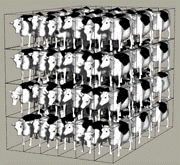Animal Science, Department of

World Congress on Genetics Applied to Livestock Production: 3rd (1986)
Date of this Version
1986
Abstract
Seed stock producers, though the smallest segment in the beef industry, are the primary sources of genetic improvement and should be the focal point of national efforts to improve genetic merit. Importation of "new" breeds into North America in the late 1960s and early 1970s increased or broadened the germ plasm base available to the industry. Thew new breeds caused a significant displacement of numbers in the established breeds and added impetus to crossbreeding in the commercial segment. The record of performance movement became a significant factor in seed stock production during the past 25 years and is now an important function of most breed association. Artificial insemination increased in scope and enhanced the genetic evaluation of breeding populations through networks generated by national sire evaluation programs. Analyses of records from these national sire summaries provide evidence that breeders have utilized records to select bulls used in the seed stock segment. New technology in analytical procedures and computer hardware offer promise of increased accuracy for identifying genetic merit of recorded traits. Finding ways to make this technology cost effective and merchandising genetic superiority remain as challenges to the industry.


Comments
Published in 3rd World Congress on Genetics Applied to Livestock Production, edited by Gordon E. Dickerson and Rodger K. Johnson, 4 vols. (Lincoln: University of Nebraska Institute of Agriculture and Natural Resources, 1986). Copyright © 1986 Board of Regents University of Nebraska.